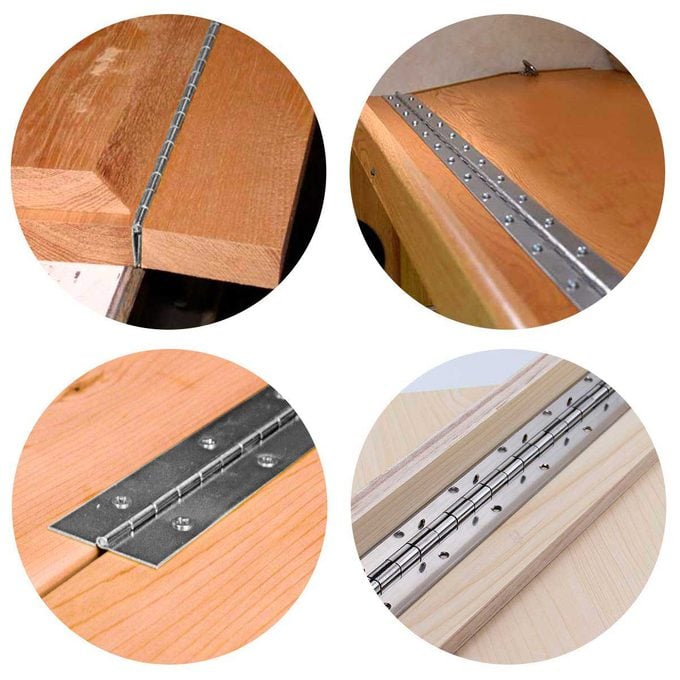Everything to Know About Piano Hinges
Updated: Aug. 18, 2023
Add piano hinges to your playlist of woodworking hardware. Here's when and how to use them.

You don’t need to be a pianist to appreciate the beauty of a piano hinge. This hard-working hardware can do for woodworking projects what it does so elegantly for pianos. Here’s what you need to know.
On This Page
What Is a Piano Hinge?
A piano hinge is a continuous hinge (sometimes referred to as continuous hinges) with a central pin and same-sized leaves that run the length of a door or box lid. The piano hinge got its name because it’s used on pianos, but it has many more applications. It’s also used for fold-down workbenches and desks, cabinet doors and storage boxes.
Is a Piano Hinge Heavy-Duty?
A piano hinge’s design provides more stability than traditional hinges, which makes it ideal for heavier doors and lids that need extra support. Here’s more on heavy-duty hinges.
What Are Piano Hinges Made From?
Many piano hinges are made of stainless steel, but you can also find aluminum or brass versions. They’re sold in several different finishes.
How Big Are Piano Hinges?
Width (measured from the edge of one leaf to the edge of the other) ranges from about 1 to 2 in. Width and thickness of the hinges increase with the length. Piano hinges are sold in standard lengths, typically from 12 to 72 in. and you can cut them to whatever length your project requires.
How Much Do Piano Hinges Cost?
At The Home Depot, prices for piano hinges start at around $6 for a 1-ft.-long stainless steel piano hinge with a brass finish. A 72-in.-long hinge in the same style costs around $17.
How to Install a Piano Hinge
Cut the piano hinge to length with a hacksaw and file down any rough edges. Mark the location of the screw holes using a hinge center punch. Drill pilot holes and attach the hinge.
Some piano hinges have slots (Rockler calls them slotted hinges) to help make installation more accurate. Position them and put temporary screws in the slotted holes. Then, move the hinge right or left to get it exactly where you want it. Once it’s positioned, use a center punch to mark the screw holes.
Curious about concealed hinges? Here’s what you need to know.
Check out these woodworking hand tool hacks from a guy who knows his way around a workshop.
